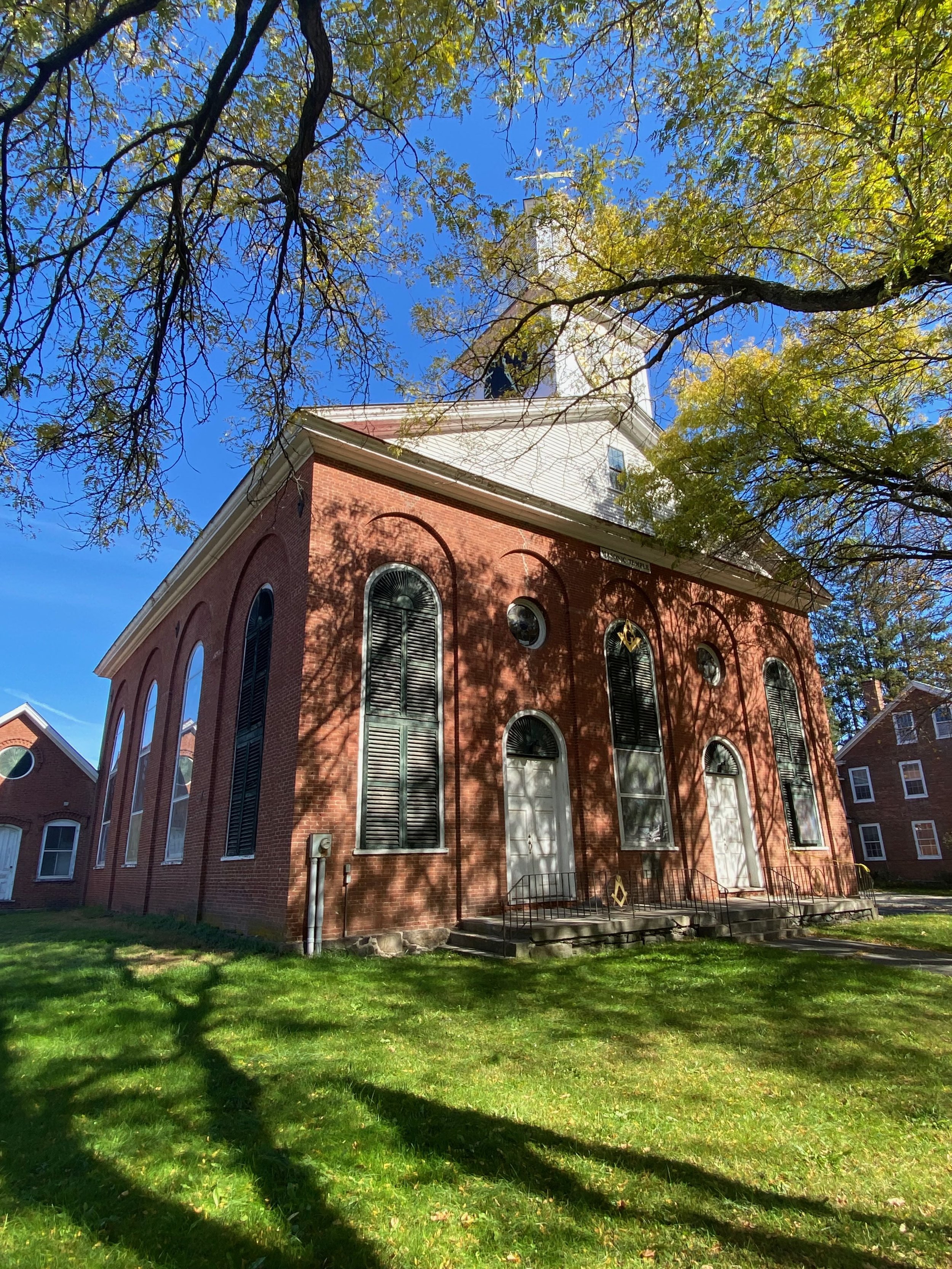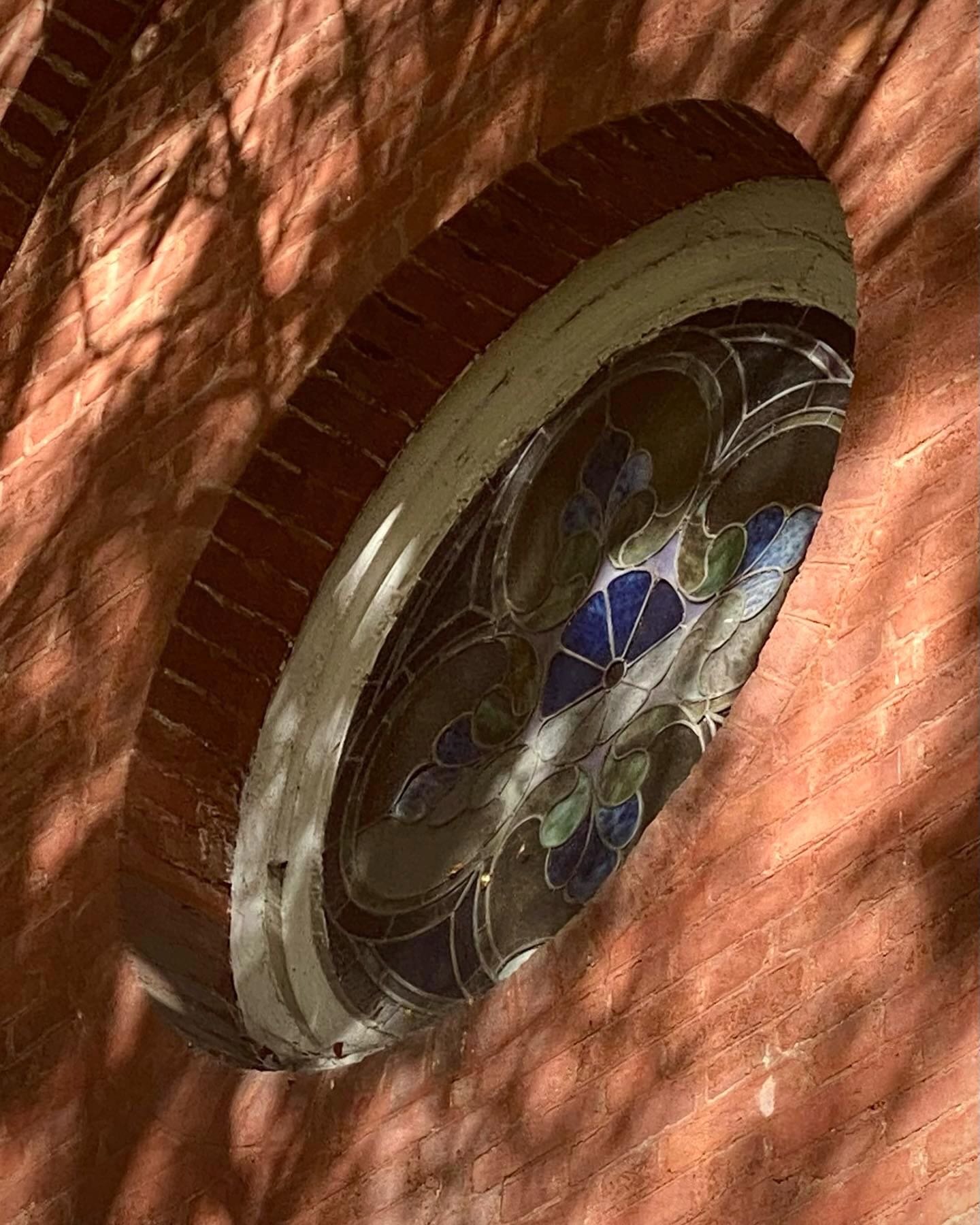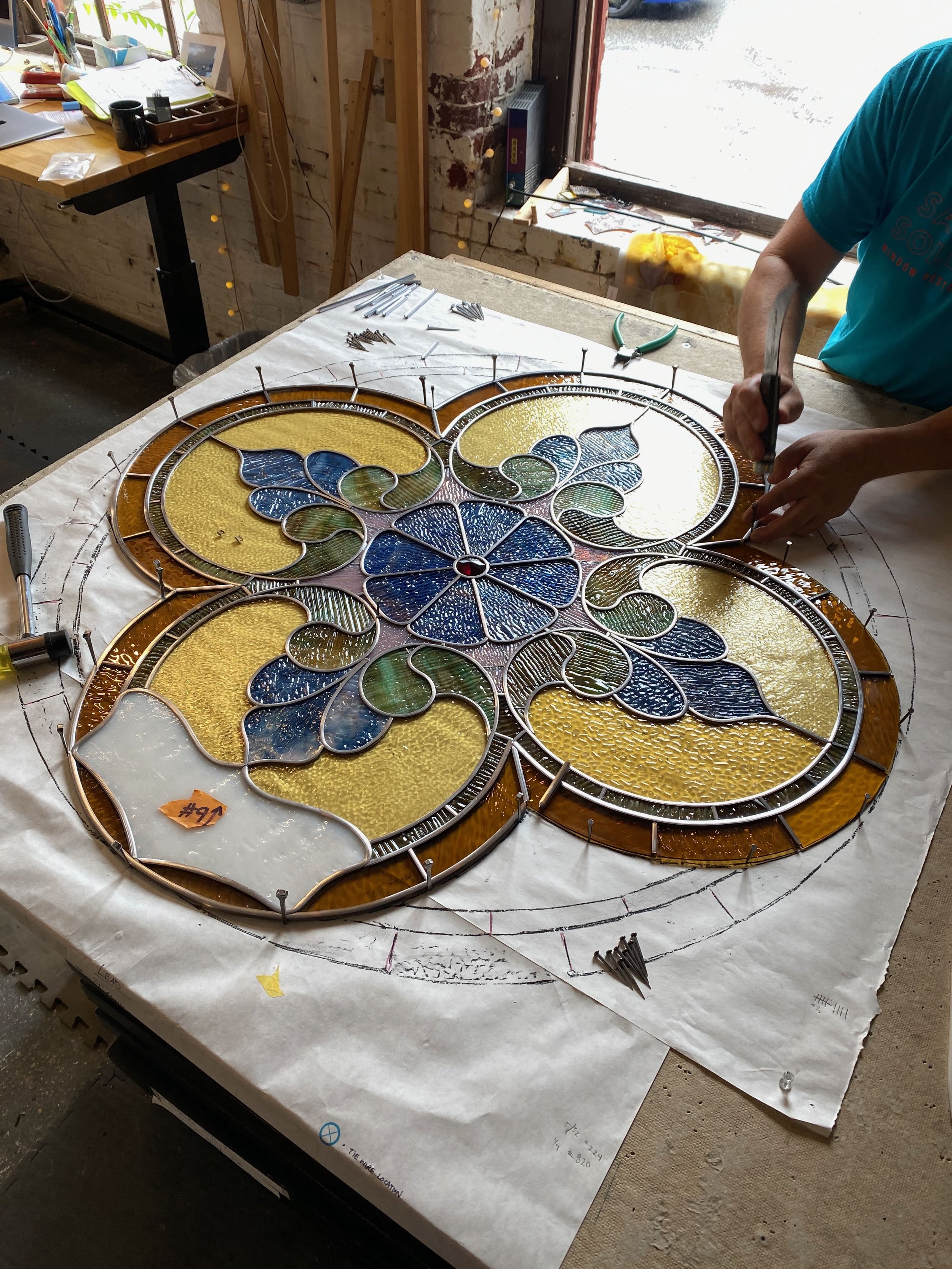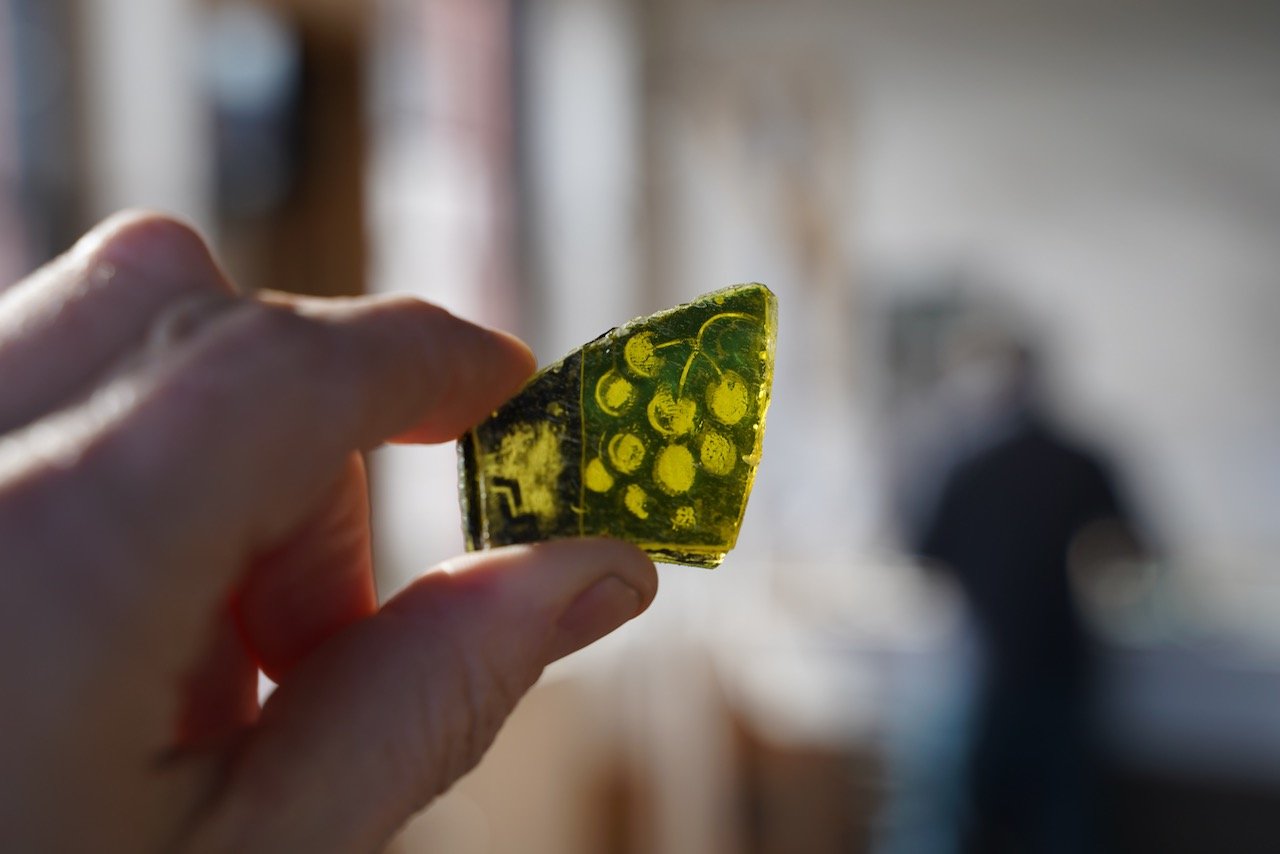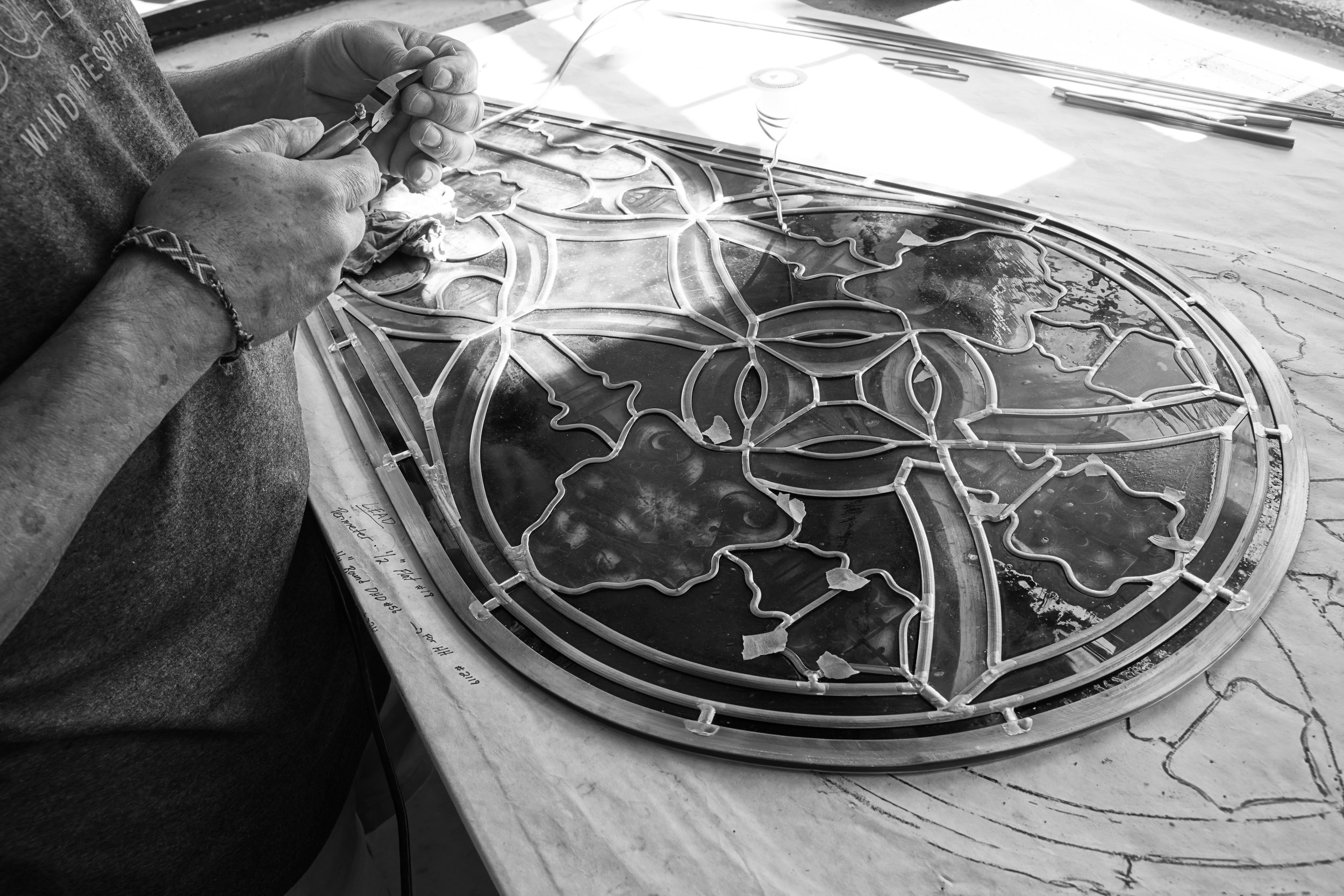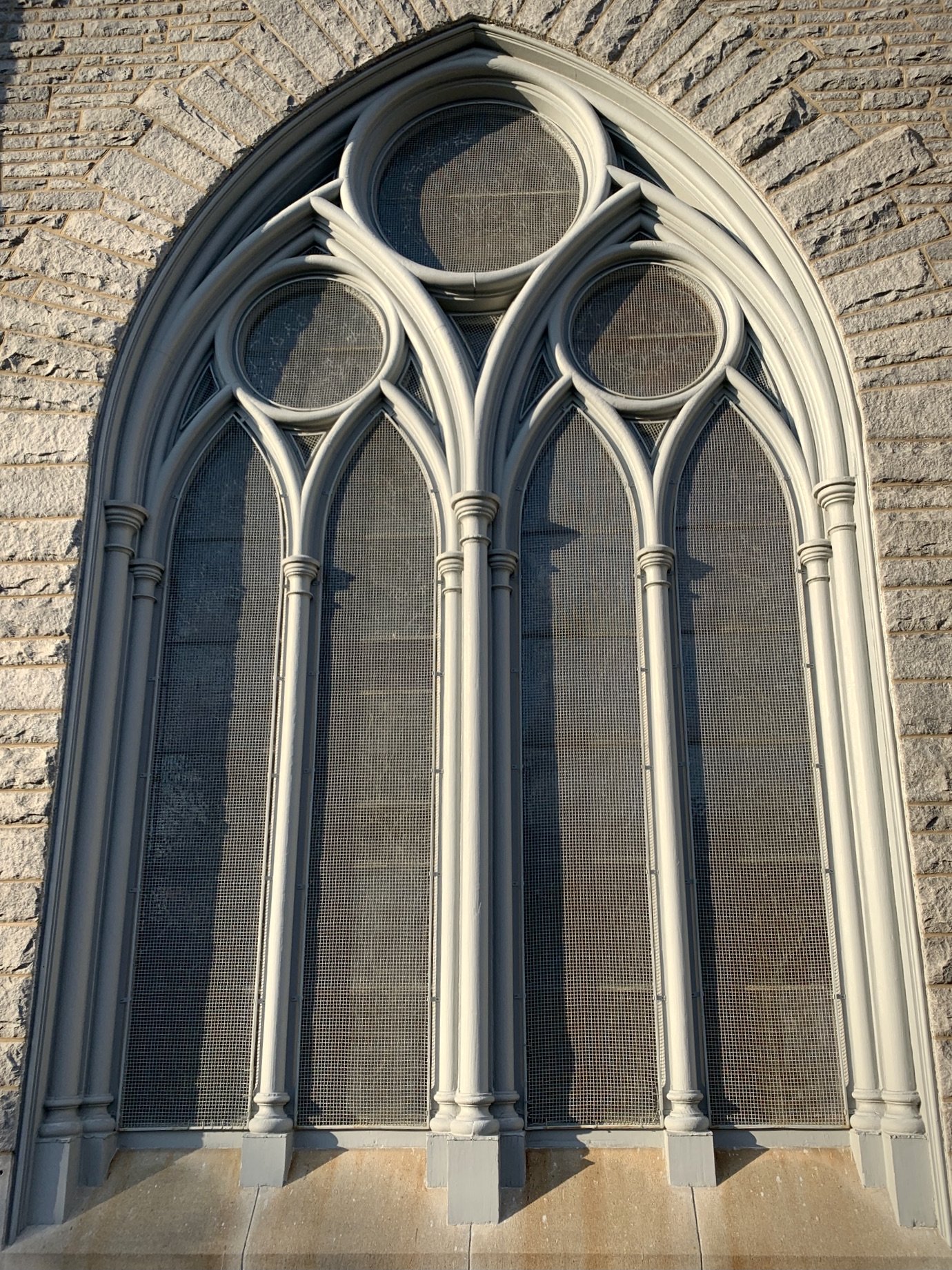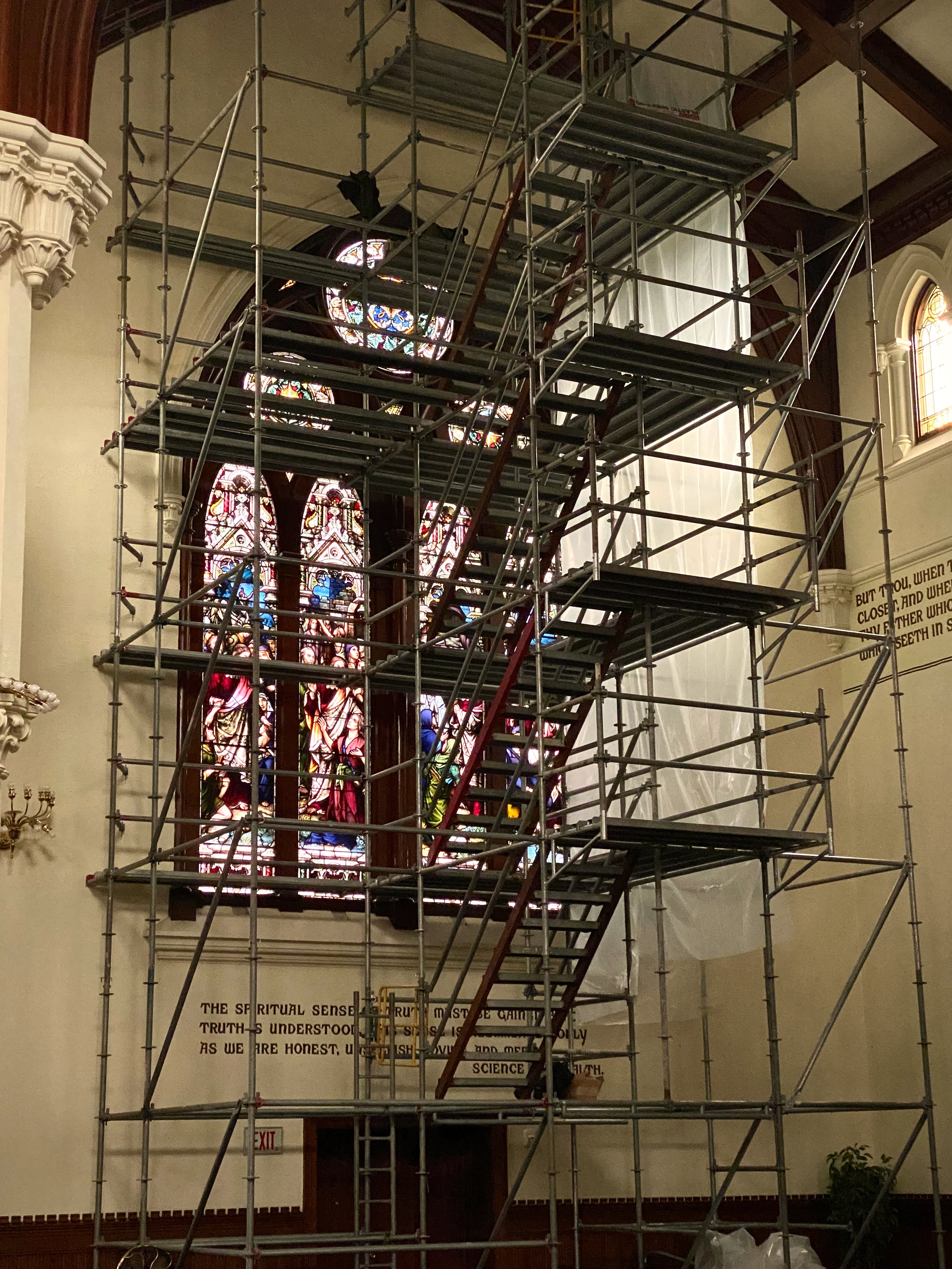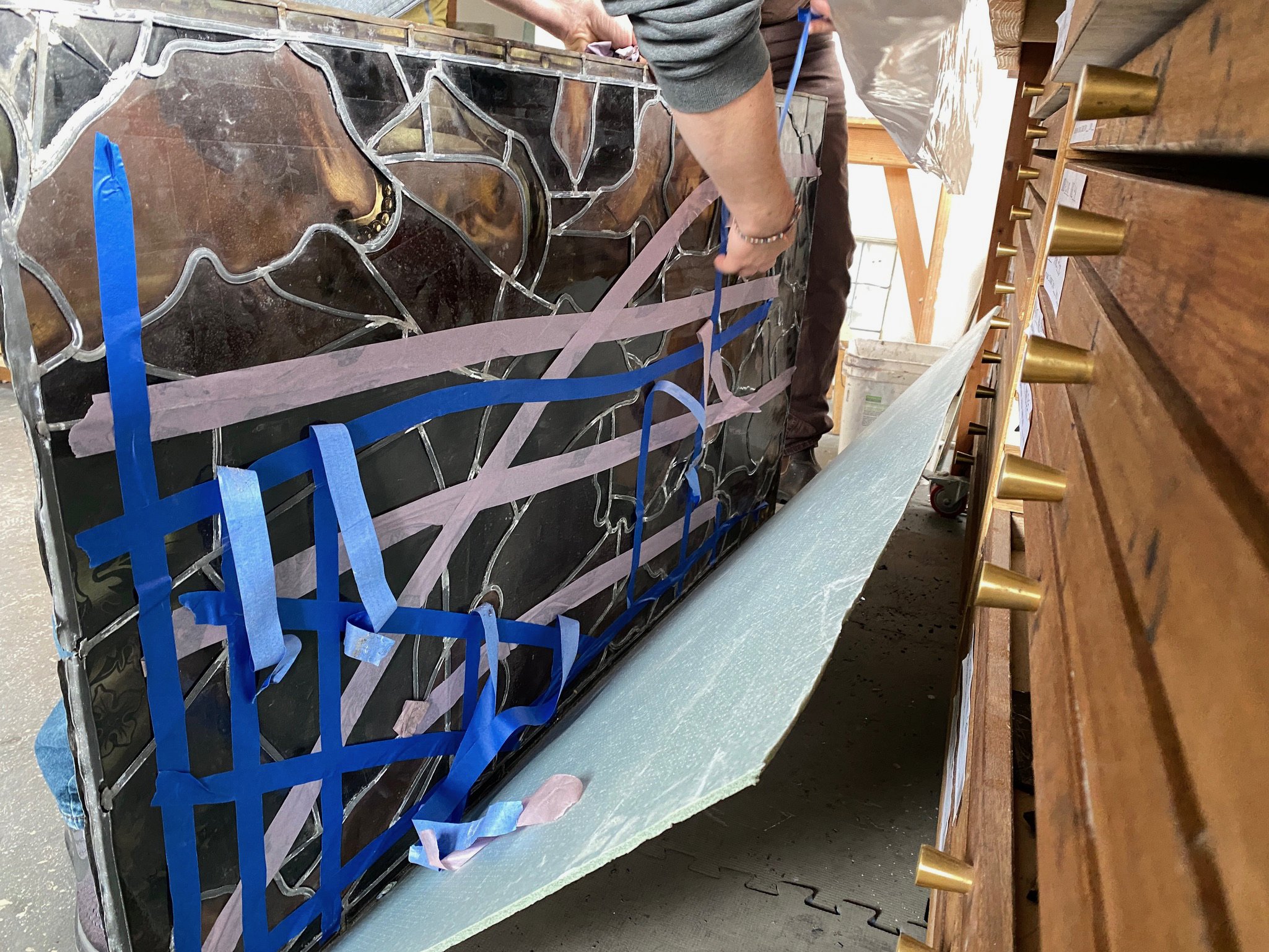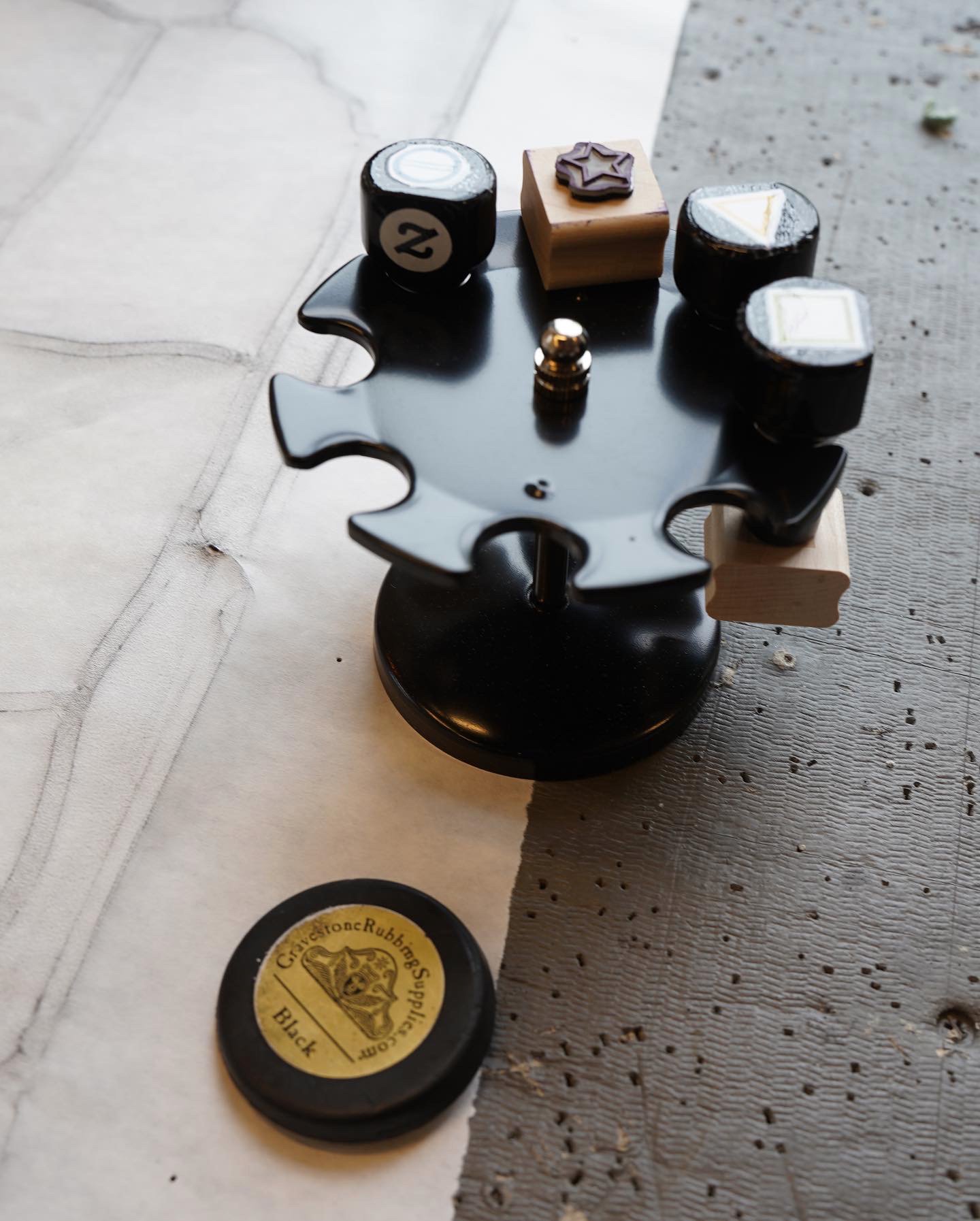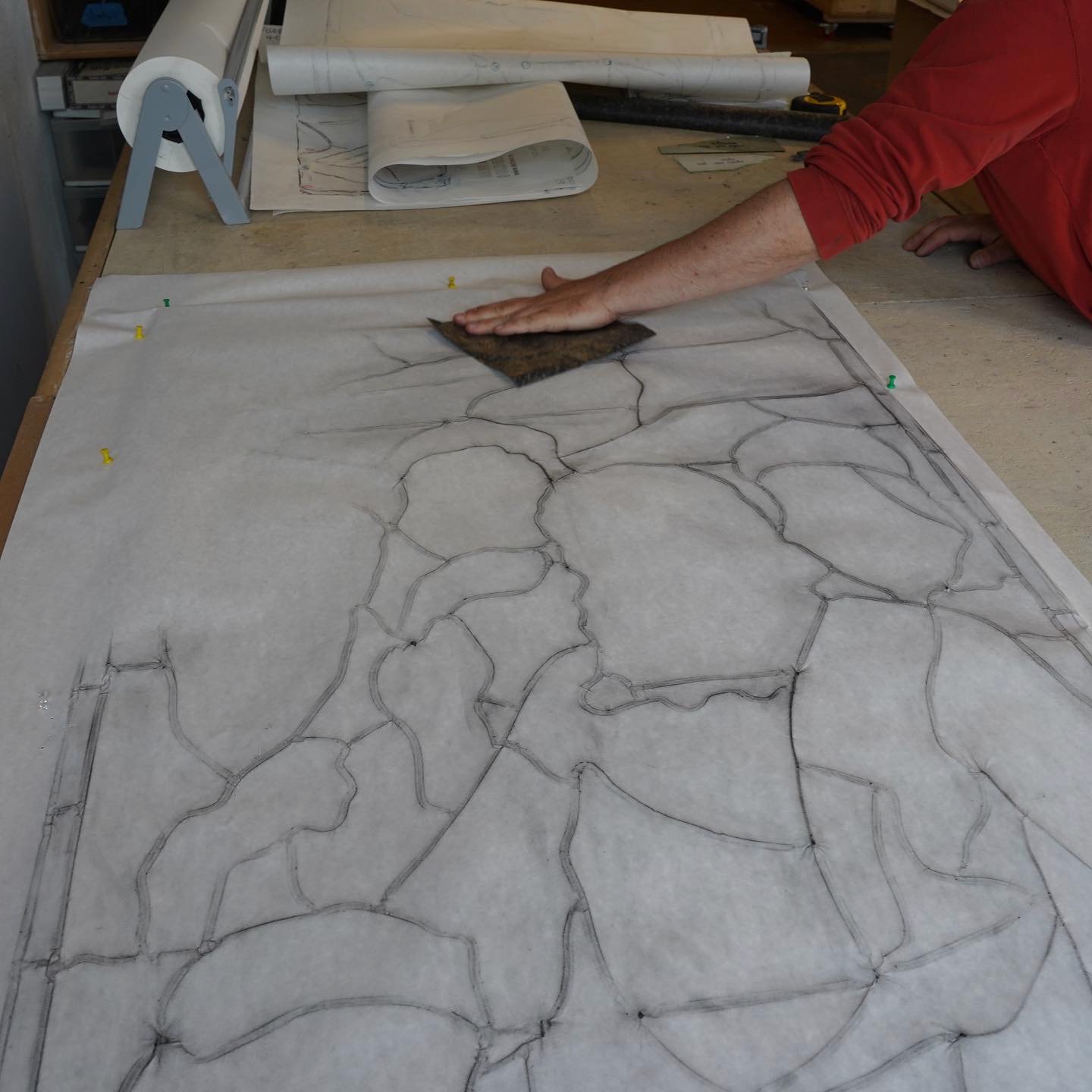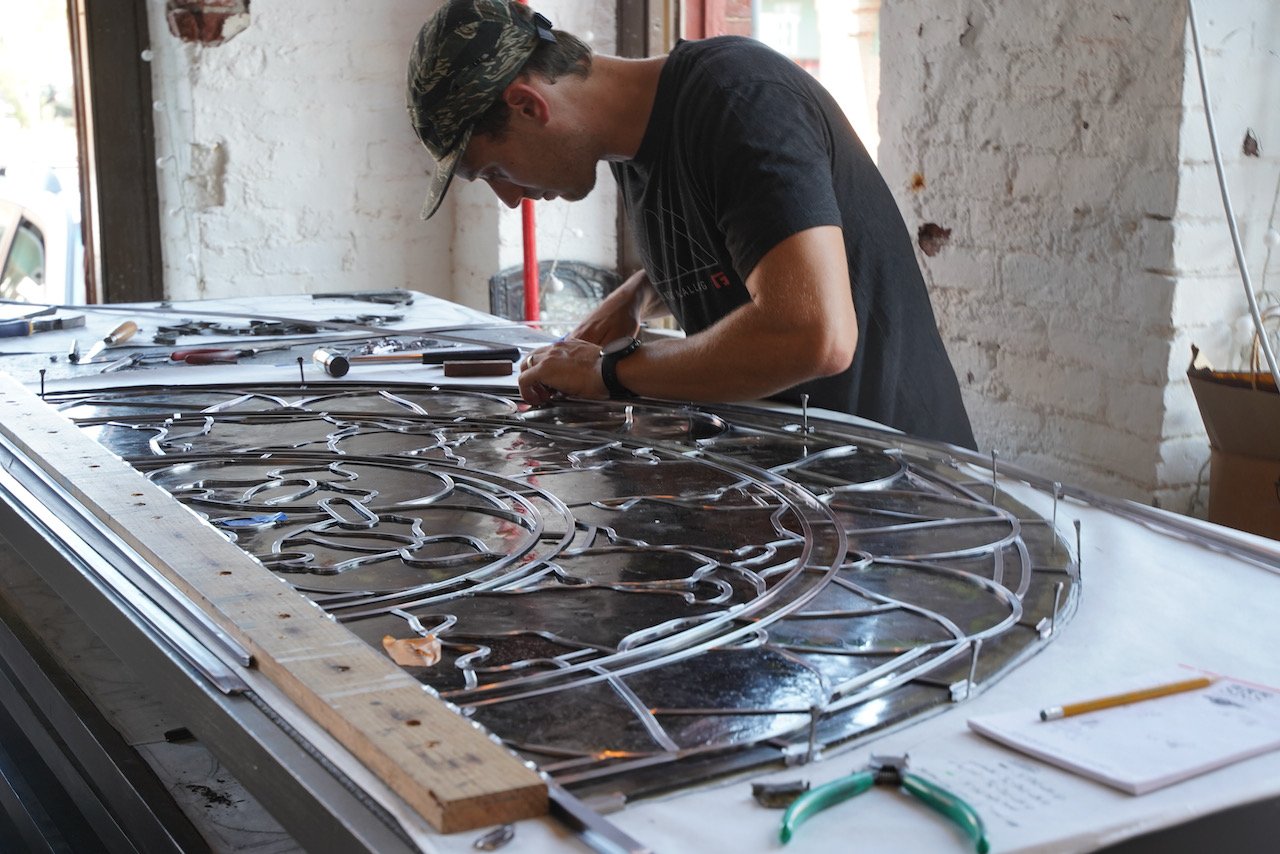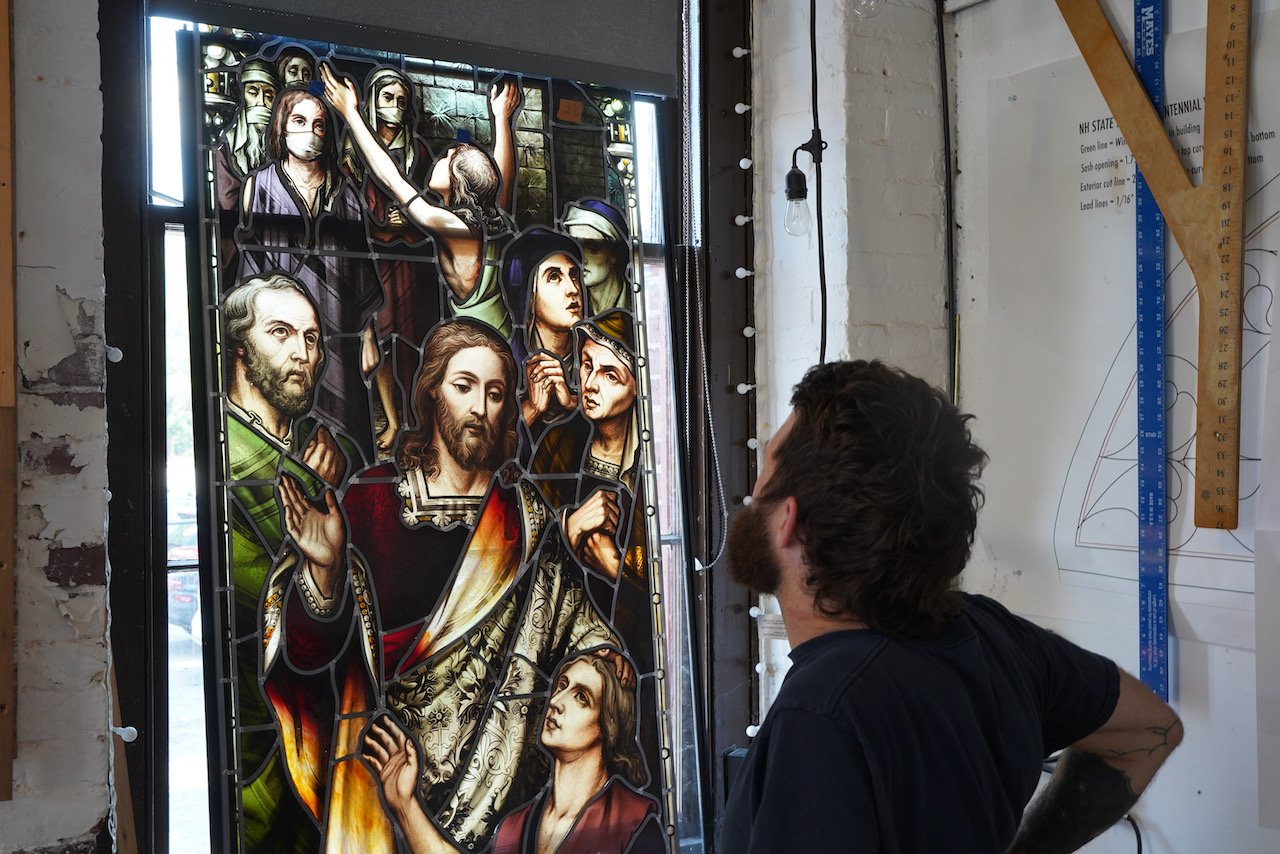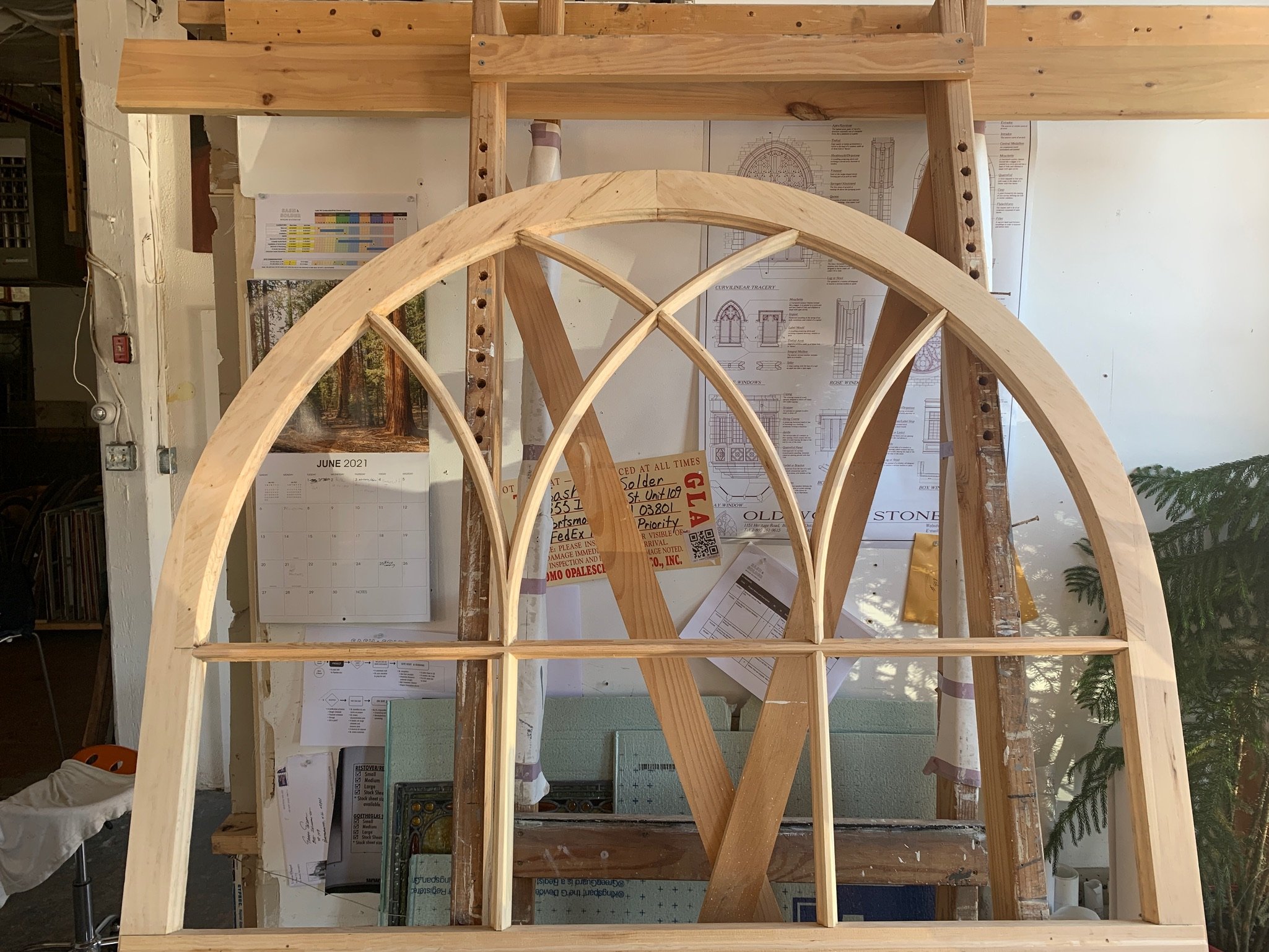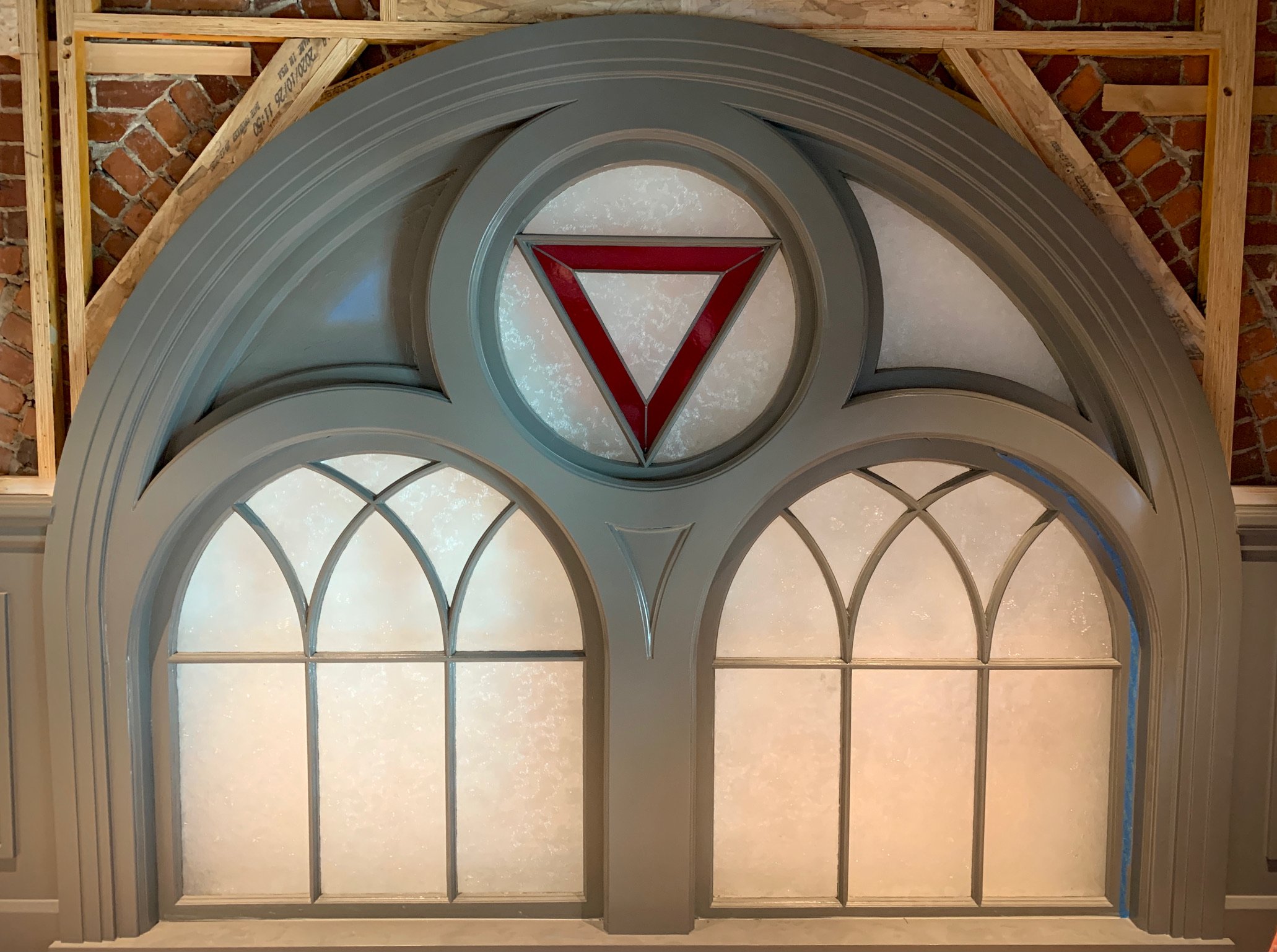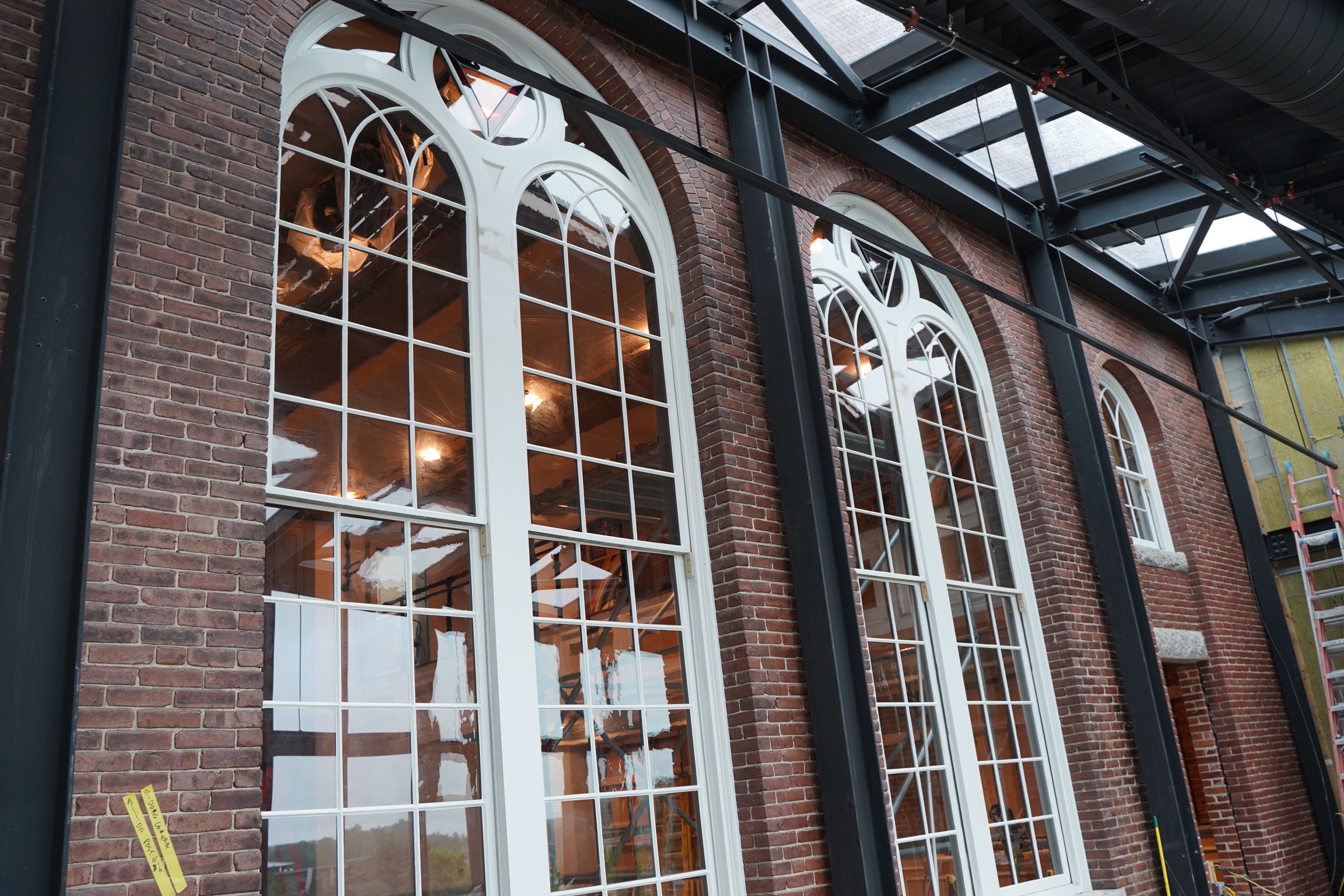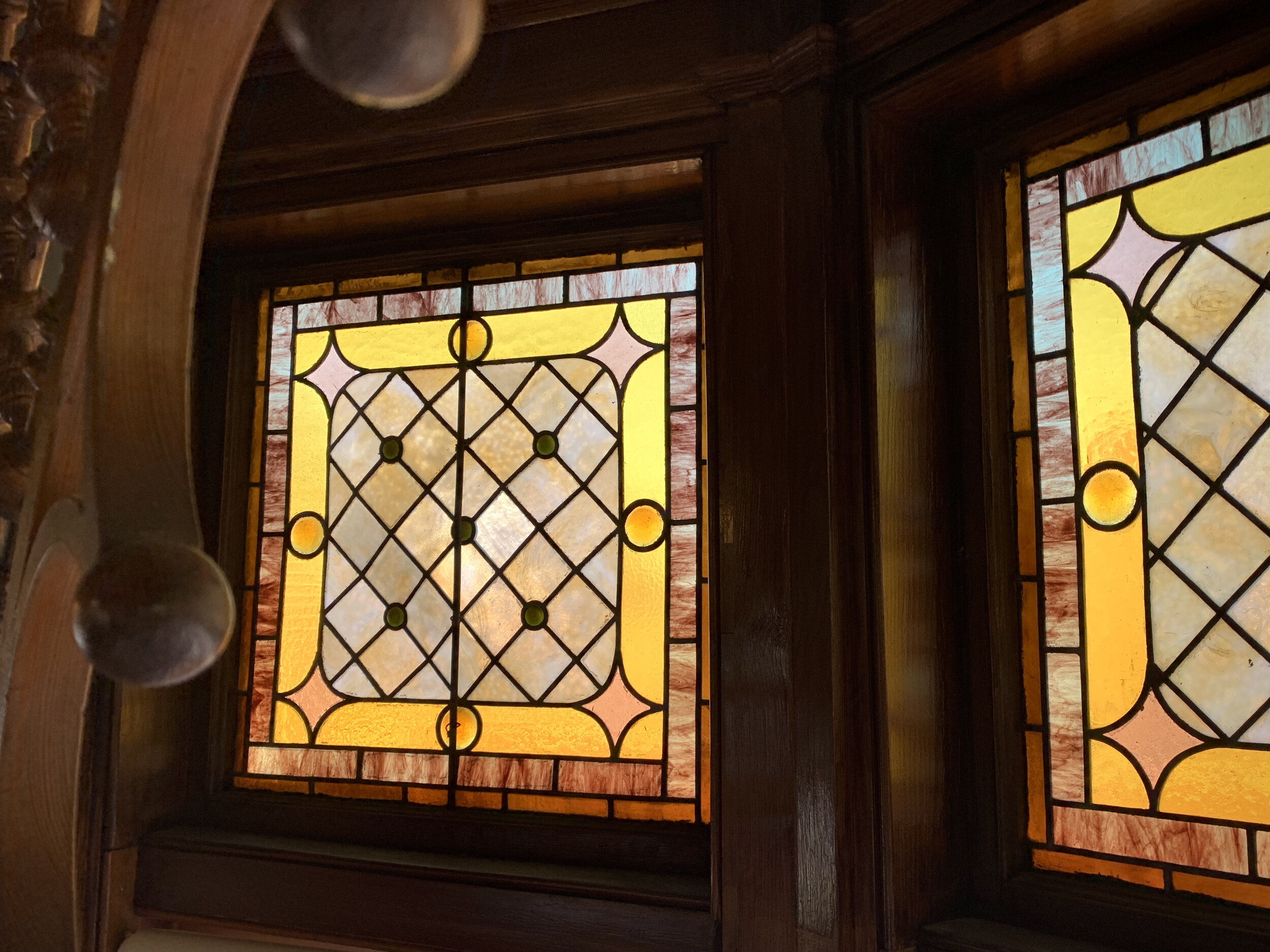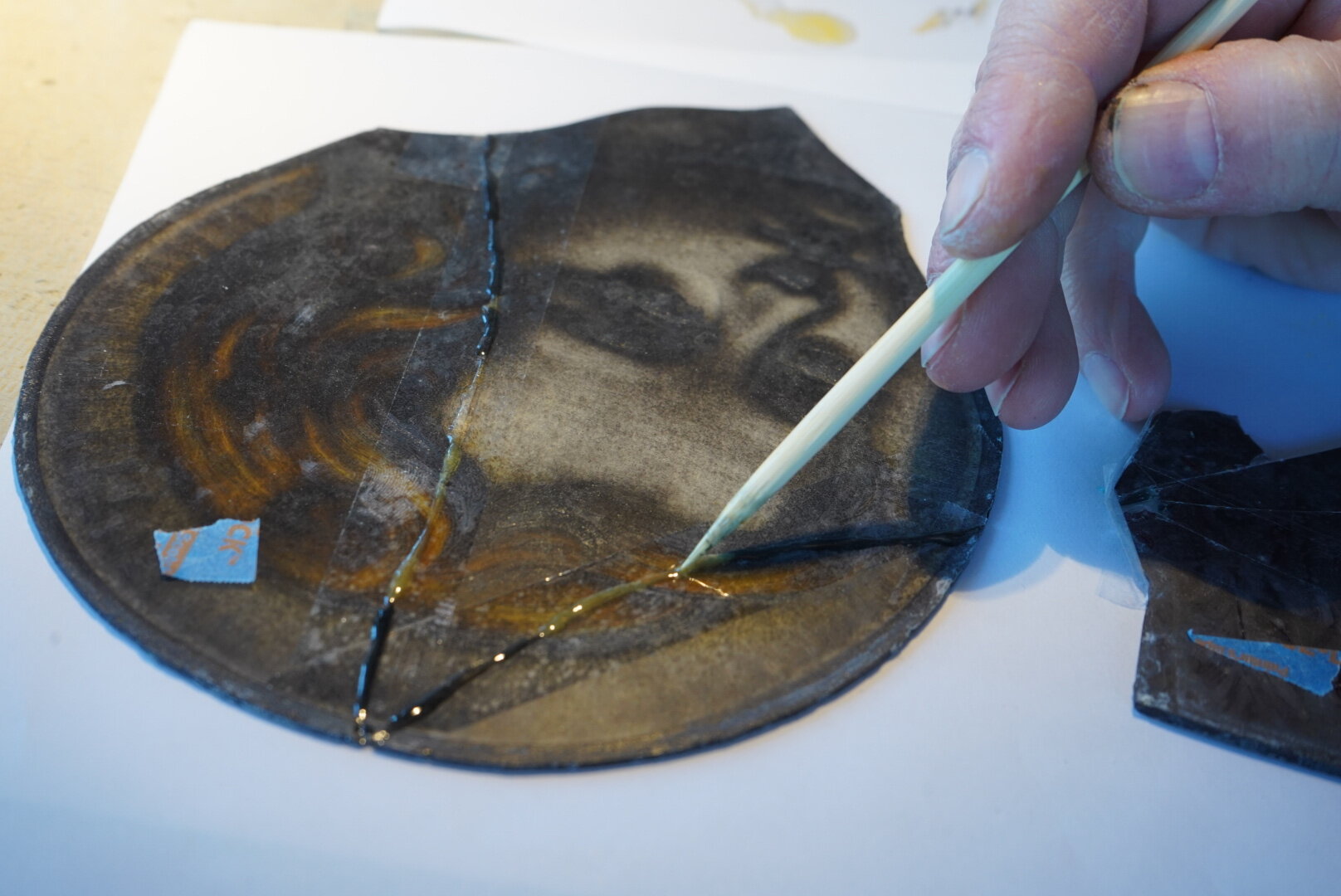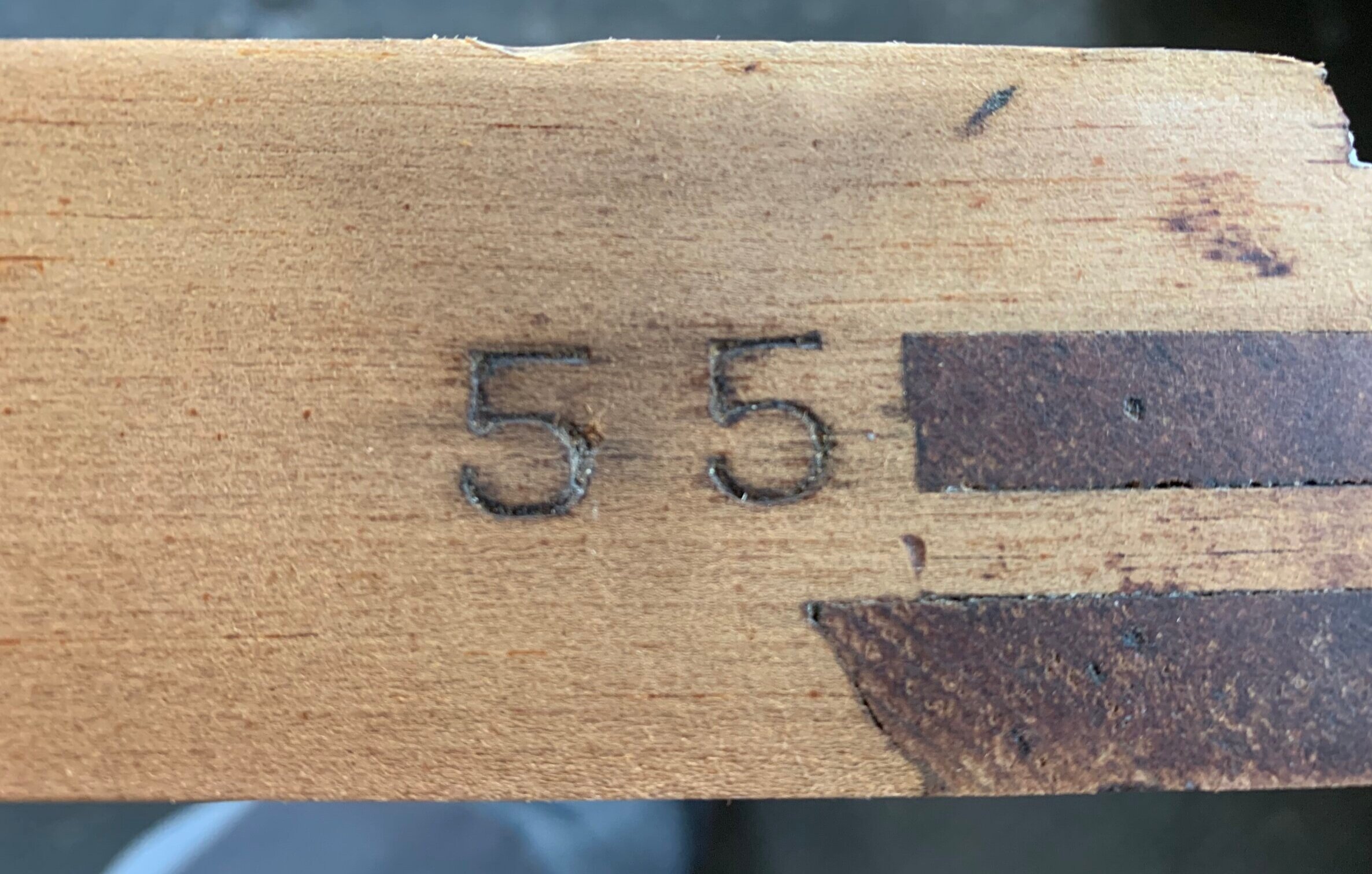The Masonic Temple in Woodstock, VT is housed in the former Christian Church, built in 1826. The building was presented to Woodstock Lodge No.31, F & A M by the Christian Church Society in 1949, along with it’s collection of beautiful stained glass windows. We were contacted to assess the windows, with particular concern for the two circular panels facing the street.
With their beautiful, bright colors and delicate design, it was clear to see that both windows were in need of repair. They were both severely deflected - one to the point that the center jewel was close to falling out of the window. The lead matrix was fatigued and cracking and the deflection caused many pieces of glass to break.
At about 42’ across in their wooden sashes, these windows fit perfectly on our studio work benches as we began the process of bringing them back to life.
Glass matching was a challenge on these beauties, so we opted to retain as much original glass as possible with a lot of copper foil and through-lead repairs.
The intricate lead work and stunning colors made for a challenging and thoroughly enjoyable build. The restored windows are now glazed into their refurbished sashes and we are excited to return them to the charming town center later this fall.

